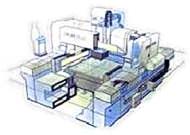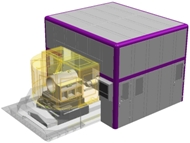 |
| Euspen Logo |
Furthermore, the community serves as a great networking platform and nurtures entrepreneurial spirit. Euspen is at the forefront of precision engineering and serves as a great arena to share and learn about new technology and industry trends.
Euspen was formed in 1999 and is headquartered at Cranfield University, a central pillar of the precision engineering community.
Cranfield Precision is a Euspen Corporate Sponsor and helps to promote Euspen activities and support the precision engineering community.











